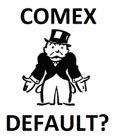Investors dumped paper gold and silver along with stocks, commodities, and most other asset classes in March. The price of silver dropped to $12.02/oz on March 18th and gold bottomed at $1,473/oz.
The bullion banks – notorious for their concentrated short positions – might have made a killing. But that isn’t what happened. Some of the most prominent players took massive losses instead.
Scotiabank, which has roots in precious metals going back to the late 1600s, is closing its metals trading business. The firm announced it would exit the business and set aside $168 million to cover the costs of blowing up a formerly profitable racket.
Part of those funds are earmarked for metals trading losses. The balance is a reserve to pay for fines and penalties related to the ongoing investigation of price rigging in the metals markets.
Scotia was caught off guard by investors doing something the bank didn’t expect.
More investors than expected stood for delivery of gold bars Scotia didn’t actually have. The bank had anticipated buyers of paper metal would simply close their position for cash – as usual.
But large numbers of them asked Scotia to deliver the bars. The bank didn’t have enough metal in the vault to meet its obligations.
Traders had to beg, borrow, and steal to get gold at gigantic premiums. Huge profits turned into enormous losses.
HSBC also reported first quarter trading losses in metals. Both banks blamed the losses on COVID-19 related refinery closures and difficulties in arranging transport of metals.
Neither bank acknowledged the obvious; that being the stockpile of physical bars backing all of the paper gold and silver they sell is not nearly as large as represented – or as large as needed to safely run the exchanges.

The bullion banks are going to have to tread more carefully. What happened in March was a shot over the bow.
Too much demand for actual bars could destroy the paper markets.
Investors with paper claims representing hundreds of ounces more than the banks have in their vaults are liable to come calling if paper prices drop significantly.
The bullion banks look more hesitant to go significantly short now, and such a dynamic means there may be somewhat of a floor under current metals prices.

